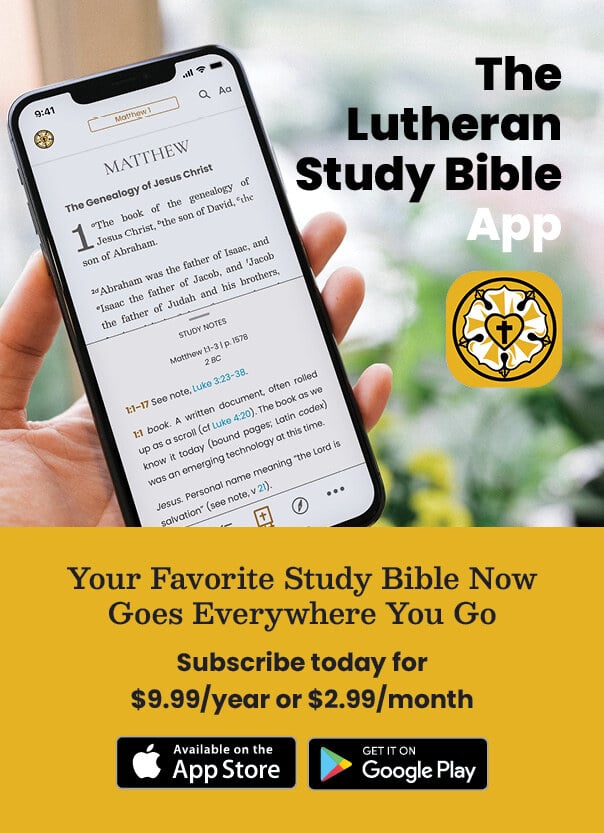Jesus Calls His Disciples: A Study of Matthew 10
Let the kingdom of heaven be proclaimed! Jesus has chosen the Twelve, and their instructions are clear: Preach and heal so that the world knows the Kingdom has come. The proclamation of the Kingdom continues today, and so God continues to send and protect His disciples.
This blog post is adapted from Matthew 1:1—11:11 in the Concordia Commentary Bible Study Series.
1 Timothy: An Overview
This blog post is adapted from Lutheran Bible Companion Volume 2: Intertestamental Era, New Testament, and Bible Dictionary.
Paul, on his way to Macedonia, has left Timothy at Ephesus with instructions to “charge certain persons not to teach any different doctrine” (1 Timothy 1:3). Paul does not describe this “different doctrine” systematically, but from his attacks upon it in 1:3–7; 4:1–3, 7; 6:3–5, 20–21 and from the tenor of his instructions for the regulation of the life of the Church, it is clear that Timothy must do battle with a deeply troubling heresy.
How God Speaks with His People
This blog post is excerpted from The Christian Faith: A Lutheran Exposition, second edition, by Theodore J. Hopkins and Robert Kolb.
God used the many and varied voices of the prophets to convey His message to His people (Hebrews 1:1), and He spoke the final, complete Word through His Son (Hebrews 1:1–2). His Word, His message for us, came in human flesh, as Jesus of Nazareth, who claimed all authority in heaven and earth because He is the author of life and the author of new life (Matthew 28:18).
What Does a Good Law-Gospel Sermon Look Like?
This blog is excerpted from an article by Rev. Carl C. Fickenscher II that was published in a previous edition of Concordia Pulpit Resources.
So much has been written on the dynamics of Law and Gospel—by classic authors such as Luther and Walther as well as more contemporary ones such as Gerhard Aho, Richard Lischer, Herman Stuempfle, and Gerhard Forde—that Law-Gospel preaching might be evaluated from any number of perspectives. In this study, though, seven criteria have been distilled from the various sources. While these are not exhaustive, they will be sufficient to determine whether meaningful differences in Law-Gospel effectiveness exist among sermon forms. In addition, it is hoped that the criteria can be guidelines which we preachers use personally to sharpen the Law and Gospel of our own messages.
2 Thessalonians: An Overview
The city of Thessalonica, named after a sister of Alexander the Great, was
built within sight of one of the great religious landmarks of ancient Greece.
Southward, across the Thermaikos Bay, the people could see the distant
slopes of Mount Olympus, traditional home of the gods in their culture.
Time in the Biblical World
While we take for granted that time is divided into units of minutes, hours, days, weeks, months, and years, as well as an annual calendar of twelve months, when considering biblical chronology we cannot assume that our understanding of the passage of time is the same as that of the biblical writers.
Moreover, since the various books of the Bible were written over a number of centuries and in different places, we cannot assume that every biblical author was referring to units of time in the same way. Therefore, we must first familiarize ourselves with the reckoning of time at various times and places in the ancient world.
1 Thessalonians: An Overview
Founded in 316 BC, Thessalonica became an important harbor and leading city in the region. When the Romans built the Egnatian Way to connect Rome to its eastern interests, Thessalonica was a major stop and the first point of the road that reached the Aegean Sea. It was a natural stopping point also for the apostle Paul as he began mission work in Europe.
What Do Lutherans Say About the Great Commission
If you only know a few Bible passages, Matthew 28:19 is probably one of them: “Go therefore and make disciples of all nations ….” It’s an easy passage for the Christian heart to embrace.
Colossians: An Overview
Travelers from the west coast of Asia Minor would walk up the Maeander River Valley on their journeys east. If they continued passed Laodicea, along the Lycos River, they would reach the Phrygian city of Colossae in a mountain valley about 125 miles from the coast along a major trade route to Persia.
The Proverbial Design
This blog is excerpted from an article by Rev. Dr. David R. Schmitt that was published in a previous edition of Concordia Pulpit Resources.




















